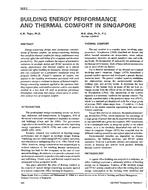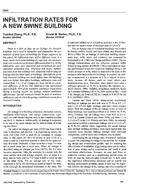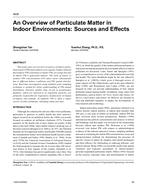In the last several years desiccant dehumidification systems have received considerable attention as humidity control devices, because of their potential to improve indoor air quality. Air quality is improved in the dehumidification process as a result of co-sorption of organic and inorganic gaseous or vapor pollutants from air along with the water vapor. Although silica gel, molecular sieve and activated carbon, along with several other solid adsorbents, have been employed in industries to adsorb various pollutants, and a significant number of studies have been reported in the scientific and engineering journals, no database is available from which these articles can be readily retrieved. The literature survey was carried out to identify the sources of indoor air pollutants, their typical concentration range indoors, sampling and measurement methods, existing removal techniques, and the availability of data related to solid and liquid desiccant systems. A computerized database using a commercially available software package has been developed, and all the relevant papers, reports, and notes are cataloged in easily accessible form. Adsorption data in the concentration range of most pollutants found indoors are not available in the literature, particularly in the presence of water vapor or when in a mixture. The presence of water in liquid desiccant systems makes them attractive media for absorbing many highly soluble pollutants. However, no previous studies have been identified in the open literature in this area.
Product Details
- Published:
- 1999
- Number of Pages:
- 288
- File Size:
- 1 file , 8.1 MB
- Product Code(s):
- D-RP-475


